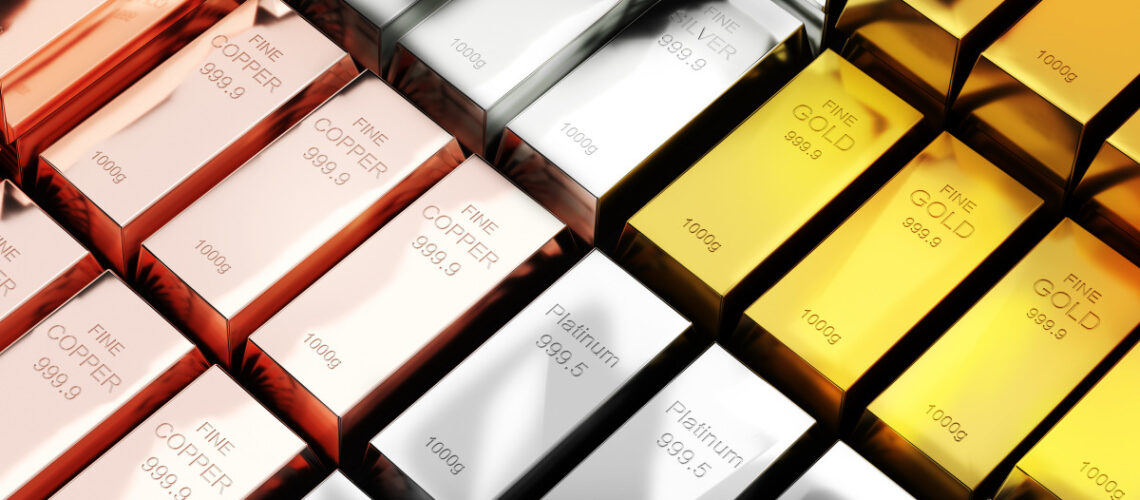In the world of investments, where trends often come and go like fleeting seasons, there exists a steadfast strategy that has stood the test of time: investing in precious metals. Among them, gold and silver have captivated human civilization for centuries, their allure reaching back to ancient times. Yet, beyond their historical significance and ornamental value, these metals have carved out a niche as indispensable assets in a diversified investment portfolio. In this exploration, we delve into the role of gold, silver, and other precious metals in the intricate tapestry of investment strategies, understanding why these timeless treasures continue to be pivotal choices for astute investors.
Historical Significance: A Testament to Timeless Value
Gold, in particular, has transcended eras and civilizations as a symbol of wealth and power. From ancient Egyptian pharaohs adorning themselves with intricate gold jewelry to the modern-day central banks stockpiling this precious metal as a reserve currency, gold’s historical significance is unparalleled. It serves as a testament to its enduring value, not subject to the ebb and flow of contemporary financial markets. Likewise, silver, often referred to as ‘poor man’s gold,’ has its own rich history, having been used as currency in many cultures and prized for its industrial applications. This historical significance underlines the stability and reliability that these metals offer in the realm of investments.
Inflation Hedge: Safeguarding Wealth in Uncertain Times
Investing in precious metals, such as gold and silver, is often considered a prudent strategy to hedge against inflation. This time-tested investment approach relies on the intrinsic value and historical stability of these metals. Inflation, which refers to the gradual increase in the general price level of goods and services in an economy, erodes the purchasing power of a currency over time. As more money chases the same amount of goods and services, prices naturally rise, making each unit of currency worth less in terms of what it can buy. This devaluation of money can lead to significant economic uncertainties and challenges for investors and savers.
Precious metals, on the other hand, have been used as a store of value for centuries due to their scarcity, durability, and universal acceptance. They don’t rely on governments, central banks, or economic policies for their worth, making them an attractive option for those seeking a reliable means to preserve wealth in the face of inflationary pressures. When inflation accelerates, the prices of goods and services increase, but the value of precious metals tends to rise as well, effectively maintaining their real purchasing power. This ability to hold their value in times of economic uncertainty is why many investors turn to precious metals as a hedge against inflation.
Diversification: Balancing the Investment Portfolio
Diversification, the strategy of spreading investments across different asset classes, is a fundamental principle of sound financial planning. Precious metals play a pivotal role in diversifying investment portfolios. In times of economic downturn, when traditional assets such as stocks and bonds may underperform, gold and silver often exhibit an inverse relationship, rising in value when other assets decline. This counter-cyclical nature ensures that a diversified portfolio, including precious metals, remains robust and resilient, mitigating risks and enhancing overall stability.
Industrial Demand: The Engine of Growth
Beyond their traditional roles, precious metals, particularly silver, are integral components in various industrial applications. From electronics and solar panels to medical devices, the demand for silver continues to grow, driven by technological advancements. This industrial demand provides a robust foundation for investing in silver, offering the dual benefit of a safe haven asset and an essential commodity in a technologically advancing world. Similarly, other precious metals like platinum and palladium find their niche in automotive and industrial sectors, adding further layers of diversification to investment portfolios.
Global Political and Economic Stability: A Safe Harbor in Turbulent Waters
In an interconnected world where geopolitical tensions and economic uncertainties can send shockwaves across financial markets, precious metals offer a safe harbor. Gold, in particular, is renowned for its role as a store of value during geopolitical crises. Investors flock to gold during times of political instability, considering it a reliable asset that can weather the storm of global uncertainties. This attribute enhances its appeal as a strategic investment choice, ensuring that portfolios remain resilient in the face of unforeseen challenges.
Long-Term Wealth Preservation: Investing In Precious Metals
Ultimately, the enduring appeal of investing in precious metals lies in their capacity to preserve wealth across generations. Unlike many other investments that may lose value over time, precious metals have a proven track record of maintaining their worth over centuries. By including gold, silver, and other precious metals in an investment portfolio, investors are not merely seeking short-term gains but are laying the foundation for long-term wealth preservation. This strategic approach enables individuals to build a legacy for future generations, passing down tangible assets that have stood the test of time.
In conclusion, the allure of precious metals as investments lies in their historical significance, intrinsic value, and ability to provide stability and diversification to investment portfolios. Gold, silver, and other precious metals are not just commodities; they are timeless assets that have transcended centuries, serving as pillars of financial stability and security. As investors navigate the complex landscape of modern finance, the inclusion of these precious metals in their portfolios ensures that they are not just chasing trends but are embracing enduring strategies that have stood resilient against the sands of time.

